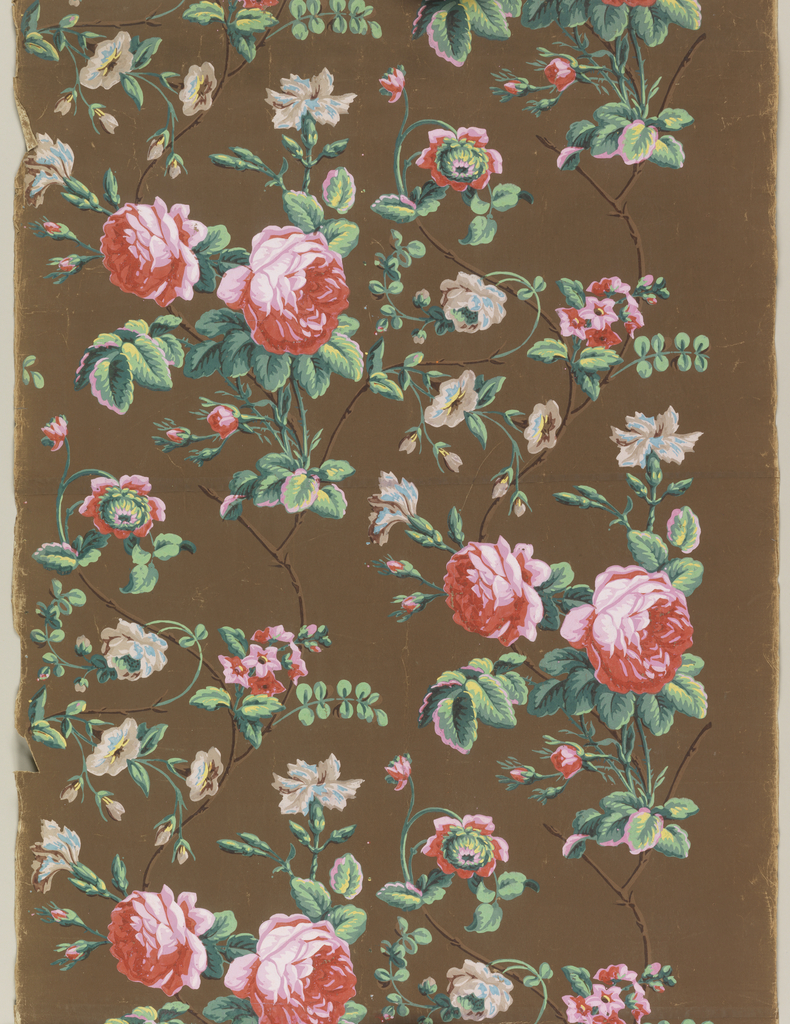An early, French-made sidewall reminiscent of the pleasant cliches of a romance in France. A warm, chocolate-colored background sets off lovely, lush pink roses in full bloom. The burgeoning blossoms grow from impossibly delicate vines, profuse with perfect little green leaves livened up by touches of pale pink and yellow. Smaller white blooms flutter about the paper, but it’s the large pink flowers that are really the star of the show. The paper dates to ca. 1800, and it’s easy to imagine ladies in elegant, Empire gowns and gentlemen wearing frothy jabots engaging in formal flirtation in a parlor hung with this enchanting wallpaper.
Beyond the pleasant aesthetics, the design of this paper is a marvel of technology and artistry, and exemplifies the fine French craftsmanship of the era. The fashion for realistic, botanically accurate renderings of flowers and gardens necessitated a sophisticated interplay of many different colors. The meandering roses and leaves on this paper are block-printed with at least a dozen different colors. Each color required a separate block to be carved and inked, and all the blocks had to be perfectly aligned with one another, and printed in the correct order, to achieve the desired result. As if the printing operation wasn’t involved enough, at this point in history the paper itself was still hand made in a laborious and time consuming process. Rags were washed and processed in chemical baths to make pulp, which was scooped up and spread into thin layers on wire mesh frames where it would dry and be pressed into sheets. Thus, pieces of paper could only be made as large as the frame in which they were formed. A close look at this particular sidewall reveals a seam, about halfway down the image, where two smaller sheets have been joined together, creating a successful union greater than the sum of its parts. How romantic!
Anna Rasche is a student in the History of Decorative Arts & Design graduate Program at the Cooper Hewitt, and is a Master’s Fellow in the Wallcoverings Department.
